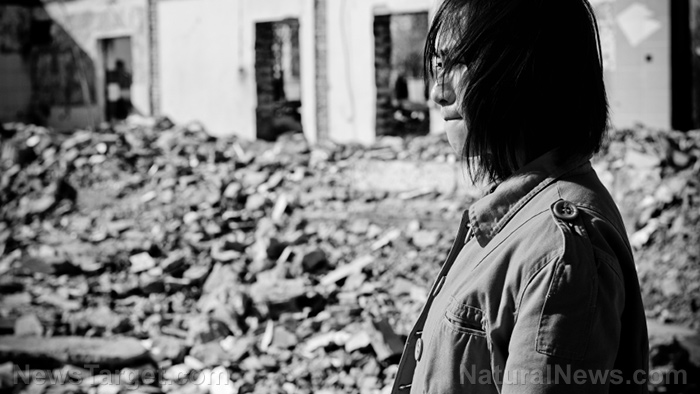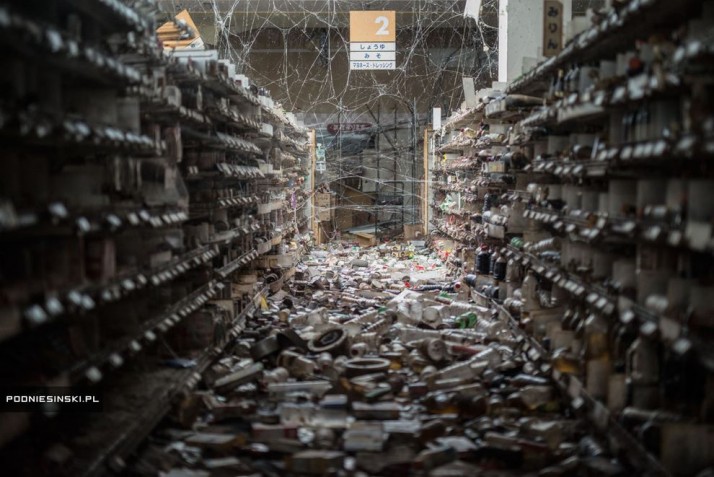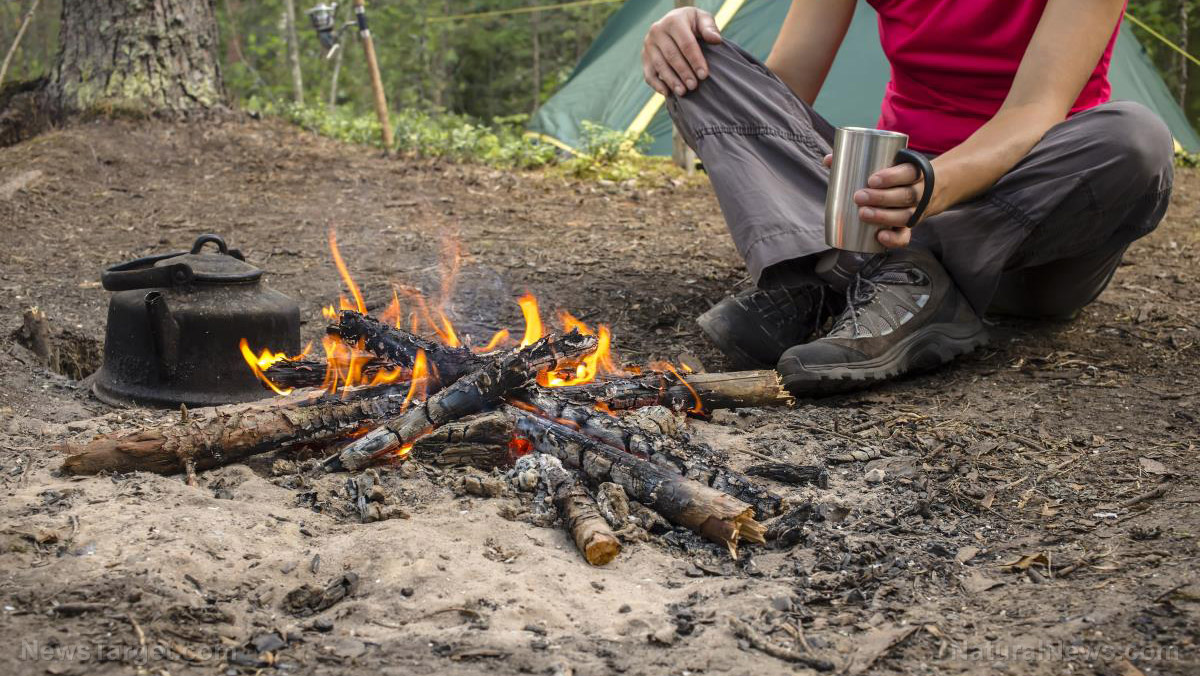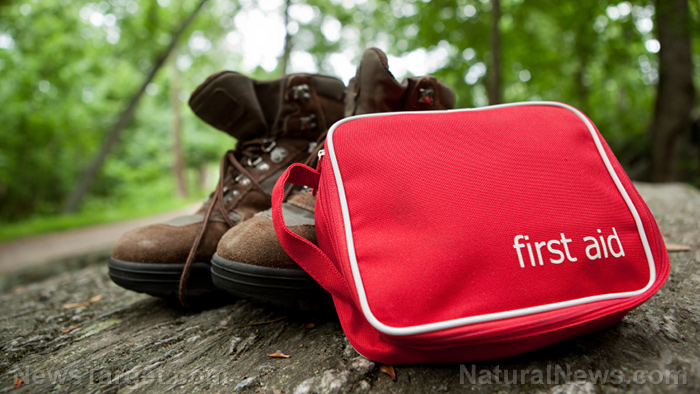Your guide to starting all over after a disaster
05/15/2018 / By Zoey Sky

As a prepper, you’re probably used to anticipating disasters and making the necessary preparations to ensure that you survive them.
But when SHTF, are you mentally prepared to start over?
When disaster strikes you’ll have to face a daunting task: Rebuilding your life from the ground up. You’ll also have to deal with property loss along with possible emotional trauma and financial concerns.
Before you can start over, you’ll need to prepare yourself mentally. After any disaster, the first thing you need to do is to get yourself and your family to safety. Once everyone’s safe, try to secure other valuable items. The second step involves some prep time because as a prepper, you always prepare for survival scenarios before they happen. (Related: Mental preparedness: How to think like a survivalist.)
Inventories and salvaging your property
To ensure that your family can start over, prepare a detailed inventory before SHTF. Go through every room in your property and document everything you own. Update your records when necessary.
Regardless of your chosen format (a notebook or an app), take note of the following in your inventory:
- Date of inventory
- Item and serial number (when applicable), date of purchase, item price, if the item was a gift or a personal purchase, and estimated replacement value.
- Name/s of the person doing inventory. This is required when placing an insurance claim, along with statements of condition or storage of valuables.
- Photos of each room and individual photos of high-value items.
- What building/room is being inventoried.
Store your inventory in a safe place together with other important documents like identification documents, legal paperwork, and medical documents.
If you’re using apps or software to record your inventory, print a physical copy so you also have access to a backup. This will take time and effort but keeping an inventory is necessary so it’ll be easier to start over, if you have to.
After you finish your inventory, prepare for the salvage and disposal work that follows a disaster. Here are some common scenarios and how you can handle them:
Smoke damage from a fire
- Ask the fire marshal for permission before re-entering your home.
- Contact your insurance agent/company.
- Survey all of the damaged areas and take photos if possible. You can consult a professional fire restorer, but checking damage personally means you can start planning ahead.
- Open windows to ventilate your home, or install a fan to circulate air.
- Remove brass and copper items and restore them with appropriate cleaners at least 24 hours after they’re damaged to prevent etching.
- Cover carpets after you remove soot to keep if from getting dirty. Cover clean and dry items with plastic to protect them.
- Check the labels of clothing and textiles to determine if they’ll require dry cleaning.
- Deodorize clothing, then wash them as you normally would. Dirtier items will require several washes.
- You may need to hire professionals to get the smell of smoke out of your house. Get the ducts cleaned and sealed and replace attic insulation since these spaces may retain smoke odor.
Water damage from flooding/fire:
Not all items with water damage can be salvaged.
- Harder surfaces, e.g., concrete, cinder blocks, and plaster walls, can be cleaned and disinfected.
- Dry wet items immediately. Hardwood floors, linoleum, and subflooring can be salvaged if they’re dried out right away.
- Separate wet area rugs from wet wall-to-wall carpeting so they can dry faster.
- Soft items, e.g., bed linens, clothing, and drapes, are often salvageable. Disinfect and wash everything before re-using.
- Soft furnishings like mattresses or upholstered furniture must air-dry in sunlight.
- Scrub and disinfect dishes and hard toys.
In most cases, you can’t save:
- Batt insulation, drywall, and wallboard
- Ceiling tiles
- De-laminated furniture
- Ductwork
- Food and medicine
- Large rugs with foam backing
When it comes to the physical damage caused by disasters, patience and hard work can still salvage most of your property. While in some cases you might have to declare a total loss, preparing ahead of time with the necessary records can minimize the damage that your property will sustain.
Dealing with emotional trauma
You can restore or replace your property, but how do you deal with the emotional wreckage of a disaster?
In the worst-case scenario, we might lose those we hold dear such as our family and friends or treasured keepsakes. To stay emotionally stable so we can support our loved ones, we must learn more about the five stages of grief.
We all have our own way of coping with grief, and this may affect how we respond before and after SHTF.
The five stages of grief are:
- Denial
- Anger
- Bargaining
- Depression
- Acceptance
No matter what kind of loss we experience, humans must deal with grief. Some may be able to express their grief externally, while others may process it internally. Not everyone goes through these stages at the same speed, time, or in the same way. Others may experience the stages of grief in a different order, or they may go through some stages more than once.
The key to handling stress and trauma after SHTF is by being resilient. You can do this by practicing the “five characteristics of resiliency:” Being positive, focused, flexible, proactive, and organized.
To prepare for a disaster and to deal with the aftermath of any crisis, you will need a plan, determination, and a good support system. Once you’re mentally prepared to handle a disaster, you’ll have an easier time guiding your loved ones as they prepare to start over.
You can read more tips on how you can prepare before SHTF and what to do after a disaster at Preparedness.news.
Sources include:
Tagged Under: Collapse, disaster, fire damage, Flooding, how to, inventory, mental preparedness, personal loss, preparedness, preparedness tips, prepper, prepping, prepping tips, recovery, SHTF, smoke damage, starting over, survival, survival skills, Survival Tips, survivalist, the five stages of grief, water damage



















